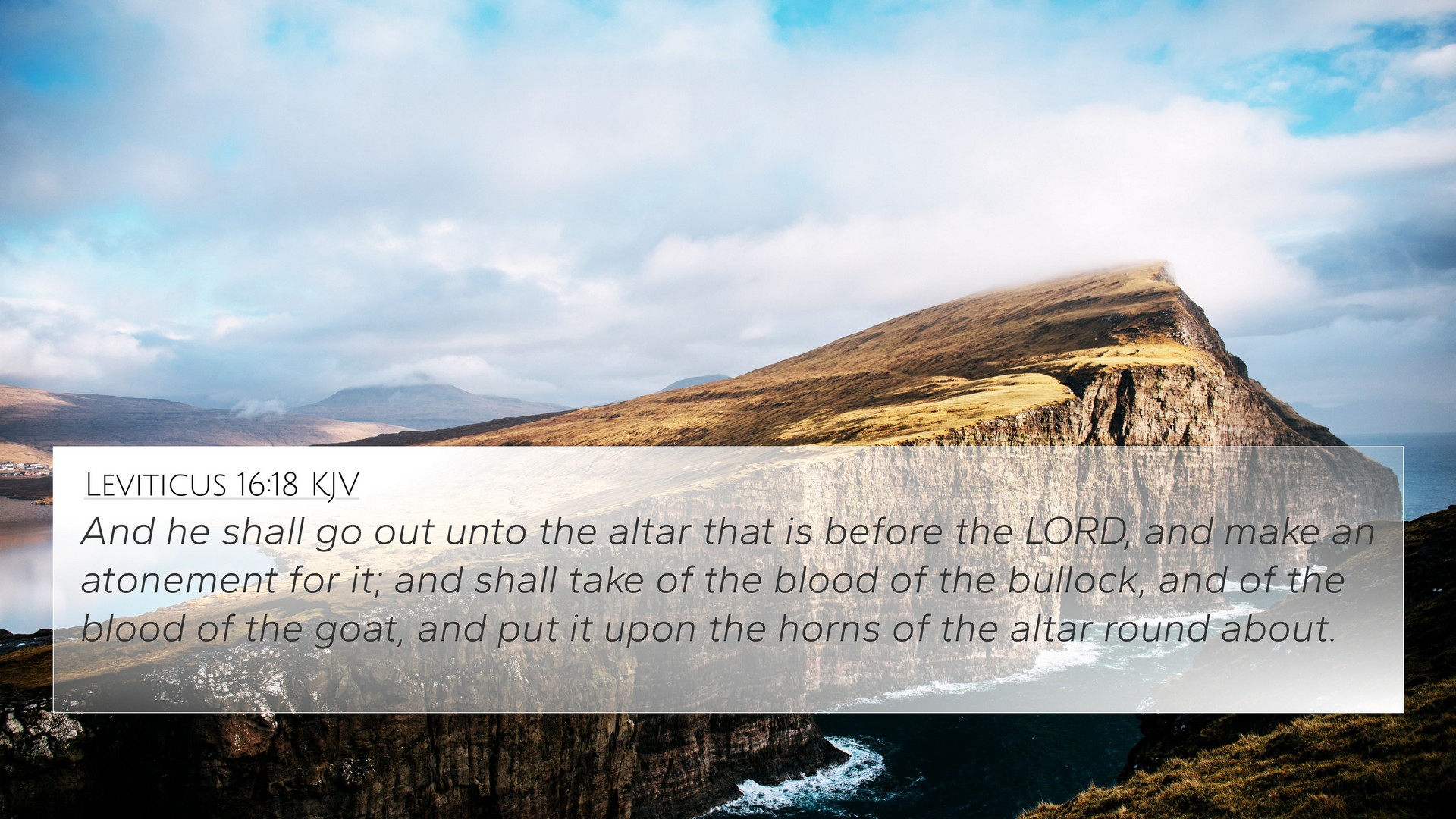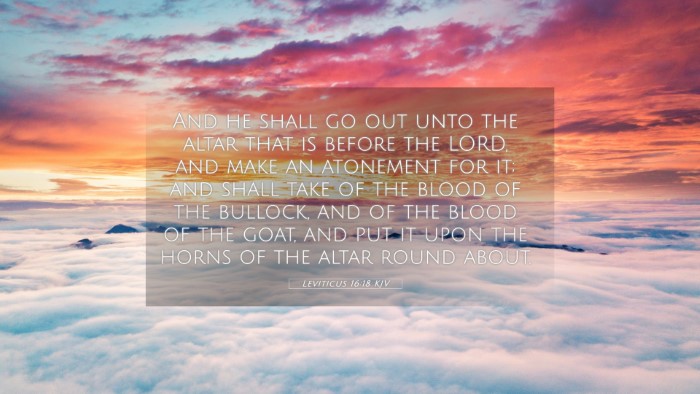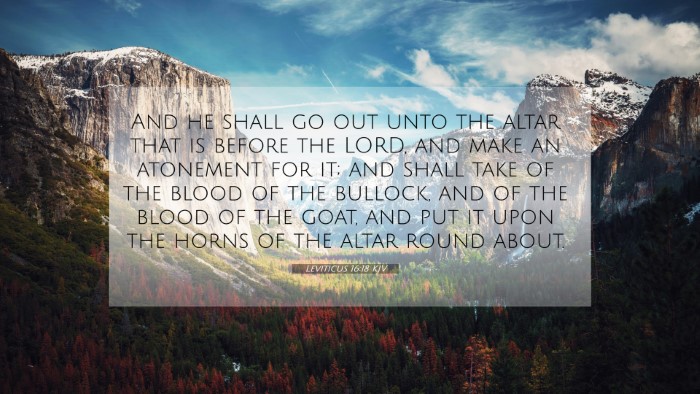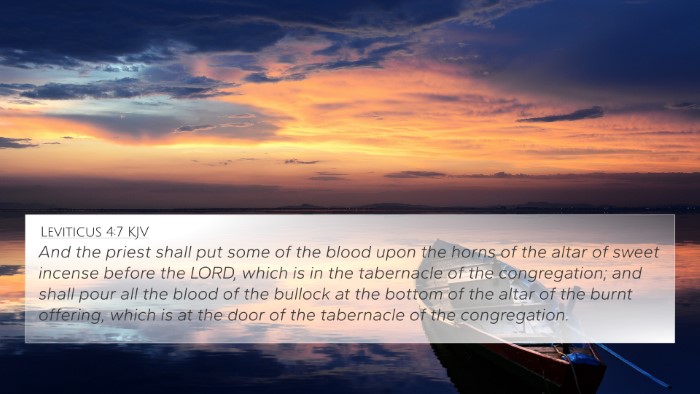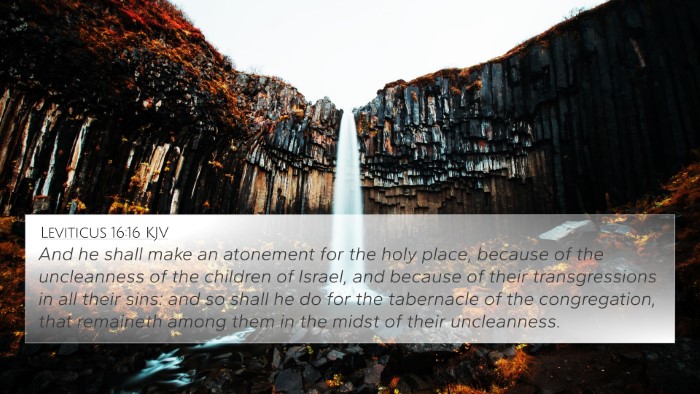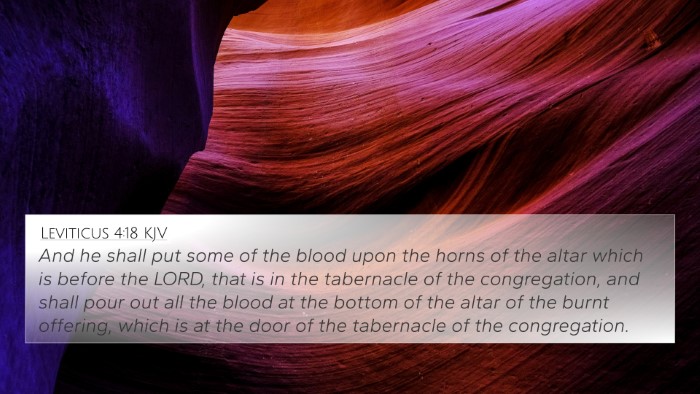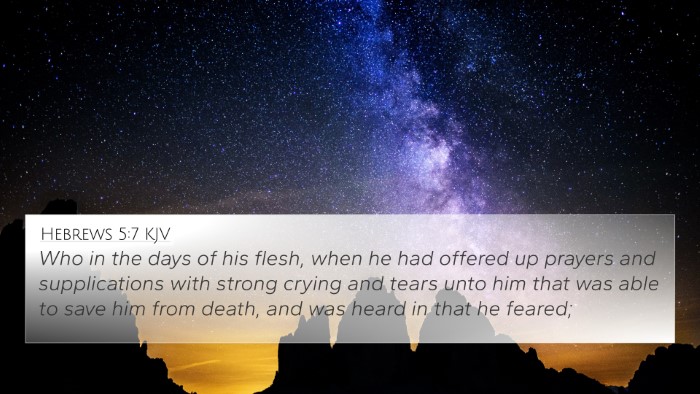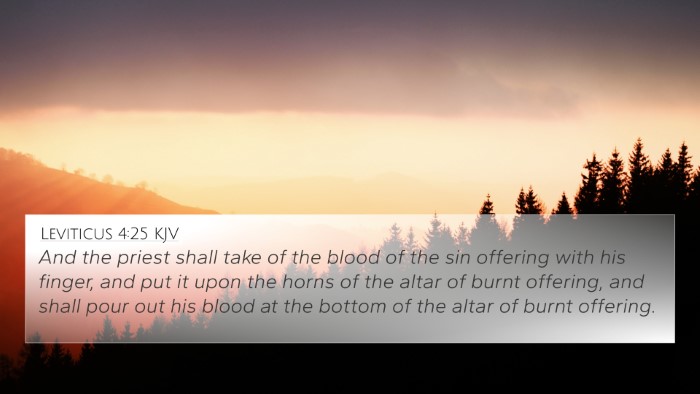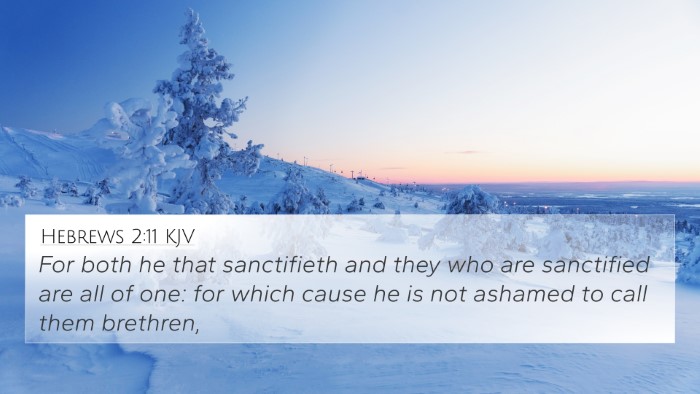Understanding Leviticus 16:18
Leviticus 16:18 states:
"And he shall go out unto the altar that is before the Lord, and make an atonement for it; and shall take of the blood of the bullock, and of the blood of the goat, and put it upon the horns of the altar round about."
This verse is a crucial part of the Day of Atonement ritual, highlighting the significance of atonement in the Old Testament sacrificial system. Through a combined interpretation from various public domain commentaries, this summary will delve into the meaning and implications of this verse.
Context of Leviticus 16
Leviticus 16 provides instructions for the Day of Atonement (Yom Kippur), a solemn day in Jewish tradition where the high priest made atonement for the sins of the people. This chapter emphasizes God's holiness and the necessity of purification and reconciliation with Him.
Matthew Henry's Commentary Insights
Henry emphasizes the importance of the rituals prescribed in Leviticus 16. He points out that:
- Atonement is a theme: The act of atonement through blood signifies the gravity of sin and the need for forgiveness.
- The role of the altar: The altar represents a meeting point between God and man, where sacrificial acts restore fellowship.
- Holiness of God: The passage serves as a reminder that God is holy, and approaching Him requires careful observance of His commandments.
Albert Barnes' Commentary
Barnes adds layers of historical and theological interpretation, noting that:
- Blood significance: Blood is central to atonement, symbolizing life and divine justice.
- Symbolism of sacrifice: The actions performed during this ceremony foreshadow the ultimate sacrifice of Christ, shedding light on the interconnectedness of Scripture.
- The necessity for cleansing: The act of cleansing the altar indicates that impurity must be dealt with before approaching God.
Adam Clarke's Commentary
Clarke's interpretation further explores this verse by discussing:
- Connection to Jesus Christ: Many see this ritual as a precursor to the atoning work of Christ, linking Old Testament practices with New Testament revelations.
- Priestly responsibilities: The high priest serves as a mediator between God and the people, reflecting the role of Christ as the ultimate High Priest.
- Consequences of sin: The necessity of atonement reveals the seriousness of sin within the community and individual lives.
Bible Cross-References Related to Leviticus 16:18
Understanding Leviticus 16:18 can be enriched through cross-references, which reveal connections between various scriptures:
- Hebrews 9:22: "Without the shedding of blood, there is no remission." - This reinforces the necessity of blood in atonement.
- Hebrews 13:11-12: Discusses Jesus suffering outside the city gate to sanctify the people with His own blood.
- Exodus 30:10: The annual atonement for the sins of Israel highlights the tradition's ongoing nature.
- Isaiah 53:5: Prophecy about the suffering servant who bears our iniquities, connecting to the idea of atonement.
- Leviticus 4:7: The importance of blood in sacrificial rituals shows a pattern of atonement throughout Levitical law.
- Romans 5:9: "Much more then, being now justified by his blood, we shall be saved from wrath through him." - The connection of Old Testament sacrifices to New Testament justification.
- 1 Peter 2:24: "Who his own self bare our sins in his own body on the tree," linking Christ’s sacrifice back to the sacrificial system.
- Colossians 1:20: Christ reconciles all things unto Himself, showing the fulfillment of peace through His sacrifice.
- John 1:29: "Behold the Lamb of God, which taketh away the sin of the world," which connects Jesus’ role to the Passover lamb and sacrificial system.
- Romans 3:25: Explains that God set Christ forth as a propitiation through faith in His blood, linking atonement to faith.
Significance of Atonement in Scripture
This passage demonstrates the intricate connection between the Old and New Testaments. Atonement is not just a practice but a theme deeply rooted in the entirety of Scripture. It reveals the character of God and His plan for redemption.
Thematic Bible Verse Connections
Throughout the Bible, themes of sacrifice, redemption, and atonement recur, presenting a coherent narrative that spans both Testaments. The following are examples of these themes:
- Sacrifice: The notion that sin requires a price is seen in other verses like Genesis 4:4 and Exodus 12:27.
- Redemption: Verses such as Galatians 3:13 speak to the redemptive work of Christ, echoing the sentiments found in Leviticus.
- Forgiveness: The connection of Leviticus 16:18 to 1 John 1:9 reflects how confession leads to forgiveness through Christ.
Conclusion
The understanding of Leviticus 16:18, when viewed through the lens of these commentaries and cross-references, opens a deeper appreciation for the Old Testament sacrificial system as it foreshadows the ultimate sacrifice of Jesus Christ. This extensive connection makes studying Leviticus 16:18 vital for grasping the biblical narrative of sin, atonement, and restoration.
For those seeking Bible verse cross-references, the tools for scriptural cross-referencing and a thorough examination of atoning themes can enhance the understanding of both individual verses and the Bible as a whole.
Engaging in cross-reference Bible study allows for a rich exploration of the interconnectedness found in biblical texts, revealing the profound ways in which Scripture speaks across its many books. If you are looking to deepen your understanding, utilizing resources like a Bible concordance or a Bible cross-reference guide can be incredibly helpful.
